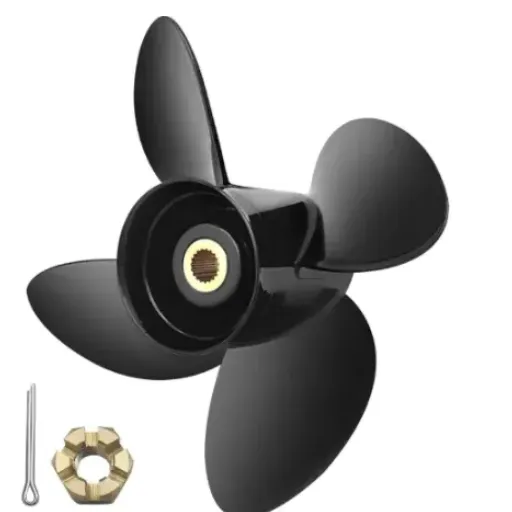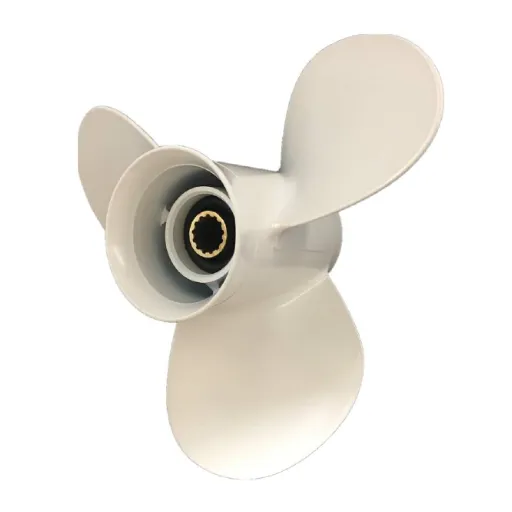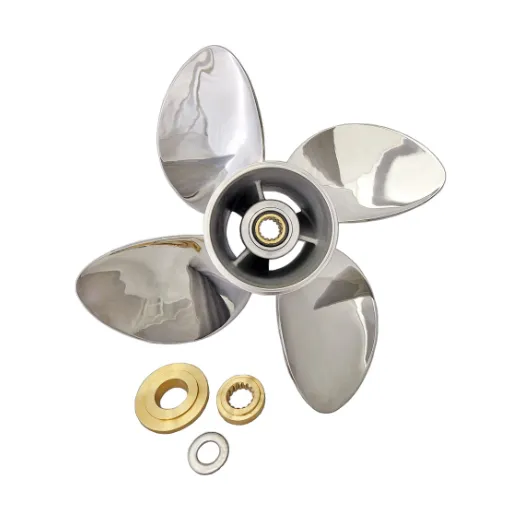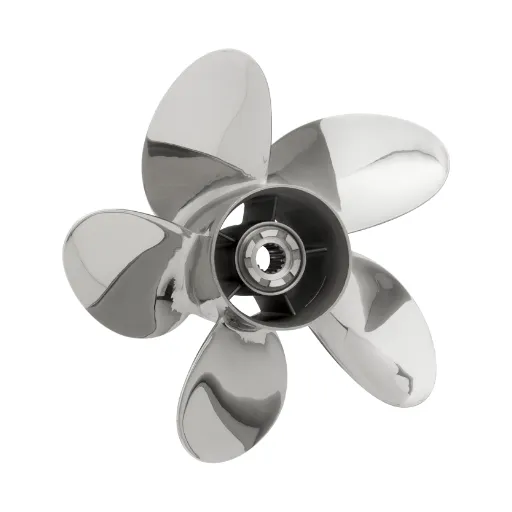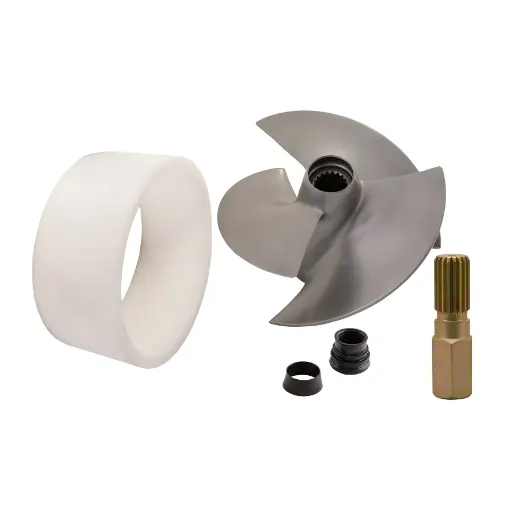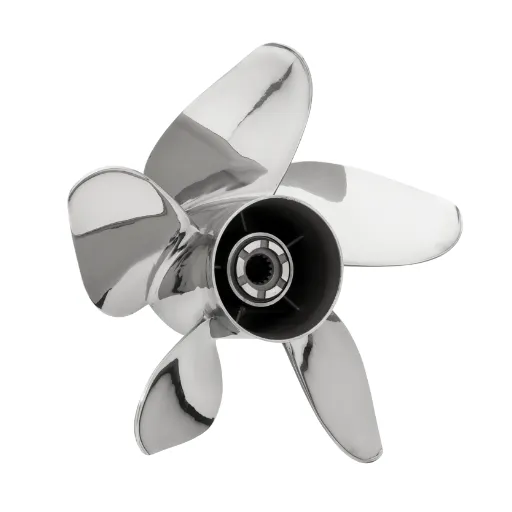Water safety has always been a major concern for all the parties involved, such as boaters, manufacturers, and governments. Among the possible dangers, accidents that are connected to propellers still count as a big problem, as they often cause very serious injuries or even death. The good news is that the boating industry is moving into a new age of safety breakthroughs with the invention of advanced propeller rings, guards, and baskets. In this article, the latest developments in these protective devices for 2025 are discussed, focusing on how they are engineered to reduce risks and improve safety. No matter if you are a pleasure boater, a commercial user, or a person working in the industry, knowing about these modern technologies is very important for the future of boat safety.
Understanding Propeller Safety
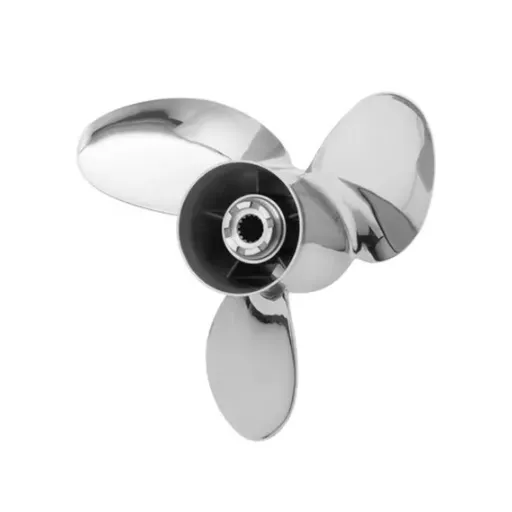
Importance of Propeller Guards
Propeller guards are safety devices of utmost importance that are meant to minimize the risk of injury or destruction due to boat propellers. The guards are mounted to the propellers as a physical barrier, and they stop the contact between the propeller and anything that can be, such as objects, marine life, or passing people. This ability is even more significant in cutting down the risks of serious injuries in accidents caused by slips or when people are water skiing or swimming close to the boats.
The ultimate aim of propeller guards is to add an extra layer of safety while still allowing the vessel to operate at its full potential. Operational safety is given primary importance and proper performance of the vessel is upheld. Enclosing the rotating blades, the guards not only help to deflect debris, but also prevent entanglement and accidents involving swimmers or animals to the least possible degree. Manufactures have come up with different designs such as the ring guards or the basket configuration so that the propeller guards can match up with the specific type of vessel and its respective usage, thus ensuring the seamless use of the propeller guards across the recreational, commercial, and industrial sectors. Their importance is greatly felt in places where waterway traffic is high or in situations where human activities often overlap with the operations of boats.
Moreover, the installation of propeller guards has been emphasized by safety regulators and industries standards as a requirement for compliance with safety regulations. Research has indicated that the use of correctly-engineered propeller guards can lower the incidence of injuries considerably, while at the same time, maintaining efficient propulsion. Through the installation of such safety systems, boat operators not only comply with the regulations but also choose to observe the best practices that respect both human and environmental safety without giving up operational performance or reliability.
Types of Propeller Guards
Propeller guards can be broadly categorized into four groups based on their design and features as well as the specific needs for safety and operation:
1. Ring Guards
Ring guards encircle the propeller with a circular frame and hence they provide a protective barrier against the propellers’ sharp edges. The use of these guards is mostly seen in the case of recreational and low-speed commercial boats where the safety of passengers and crew members is more important than the efficiency of providing maximum propulsion.
2. Cage Guards
Cage guards encompass the propeller with a cage made up of several horizontal and vertical bars, which are carefully arranged for protection. This is the type of guard that guarantees the highest safety in the most congested and shallow waters as it precludes the entrance of debris or outside objects into the propeller zone while at the same time, letting the water flow freely for propulsion effectively.
3. Nozzle Guards
Nozzle guards consist of a protective covering combined with a hydrodynamic nozzle that not only protects the propeller but also boosts its thrust and fuel efficiency. The application of these guards is mainly confined to industrial or high-performance situations where safety and performance are both critical.
4. Foil-Based Guards
Foil-based guards are designed to have streamlined foils that are efficient in water flow and they cause very little loss of performance while offering some protection. They are specifically preferred in situations where speed and safety are both critically required, such as during rescue or patrol operations.
There is a wide variation in the performance characteristics of each propeller guard type, and therefore it is of utmost importance to choose a design that meets the individual operational requirements.
Devices that Reduce Propeller Strikes
Safety in marine operations is mainly enhanced by devices engineered to mitigate propeller strikes and these devices are especially necessary in places where there is a lot of human or wildlife activity. These technologies are designed to very much reduce the probability of unintentional contact between rotating propeller blades and external items like swimmers, animals, or trash.
Propeller Guards: It is propeller guards that are still considered one of the most efficient solutions. The working of these devices requires total covering of the propeller which creates a barrier preventing contact between the blades and outside objects. The commonly used types are ring or cage-style guards which are often found in recreational boating and they are also used alongside the foil-based guards that are found in specialized high-speed applications.
Propulsion Alternatives: Jet propulsion systems are safer than conventional propellers. They do not expose blades but instead utilize enclosed water jets for propulsion. They are preferred in places with shallow waters and heavy swimmer traffic.
Sensors and Warning Systems: The most advanced sensor-based systems are capable of detecting objects in the vicinity and alerting the operator immediately with a real-time warning. Some of them are even linked with automatic shut-off systems that cut off the engine when a possible collision is sensed, which greatly lessens the chances of strike occurrences.
Each device or system has its own advantages and disadvantages in terms of operation. It’s vital to take into consideration the vessel type, its purpose, and the surrounding environmental conditions in the selection of the most suitable method for the prevention of propeller-related injuries and accidents.
Innovations in Propeller Design
Sharrow Technology and Its Impact
Sharrow Technology is a revolutionary new propeller design that offers a remarkable improvement in performance, efficiency, and safety for a wide range of marine applications. Sharrow propellers are created with a unique looping blade shape that helps to spread the pressure more uniformly and also prevents cavitation, whereas traditional propellers do not have this feature at all. The claims made for the new design have been subjected to rigorous testing and are described hereunder in detail:
Enhanced Fuel Efficiency
It has been claimed that Sharrow propellers can cut the fuel consumption of the ships by up to a whopping 30%, when compared with the traditional propellers. An independent study conducted by the National Marine Manufacturers Association (NMMA) found out that ships with Sharrow propellers could use less fuel still keeping the same speed, thus resulting in very noticeable savings in operating costs.
Improved Thrust and Maneuverability
The looped blade design creates an excellent thrust not only in forward but also in reverse thus, making the overall maneuverability better. This capability eases the process of docking and offers the control needed in difficult situations like strong currents or narrow areas.
Reduction in Noise and Vibration
Noisy and vibrating propellers have a negative impact on the noiselessness and hence the comfort of the people onboard the ship. By using Sharrow propeller, one can experience a major decrease in the noise and vibration levels, which will in turn result in a quieter and more comfortable environment onboard. The experimental results show that these propellers produce up to 50% less noise than their traditional counterparts.
Extended Lifespan
Because of the unique design, there is a reduction in the wear and tear of both the propeller and the propulsion system. The maintenance data indicates that the Sharrow propellers undergo less structural fatigue, which in turn means they have a longer life and require fewer maintenance interventions.
Eco-Friendly Operation
Sharrow propellers greatly reduce the carbon footprint and the impact on the environment by being more efficient and consuming less fuel. Furthermore, their operation being quieter also reduces the underwater noise which is less harmful to the aquatic creatures hence, supporting the marine life.
Such innovations not only make Sharrow Technology the next generation in marine propulsion systems but also deliver tangible benefits to the operator who is concentrated on the factors of efficiency, safety, and environmental responsibility.
Electric Propulsion Compatibility
The coupling of electric propulsion systems with the latest marine technology is indeed a great step towards energy-efficient and eco-friendly sailing. Sharrow propellers, thanks to their unique blade shape, are meant to work together with electric propulsion systems effortlessly. The reason for this is that they are capable of optimizing thrust efficiency even at the low rotation speeds which are the norm for electric motors. Now, traditional propellers are not able to deliver a smooth and consistent performance at these reduced RPMs, but Sharrow design’s cutting-edge fluid dynamics are so good at optimizing the transfer of energy from motor to water. The end product is an efficient, smoother propulsion system that fits the requirements of electric-powered marine vessels perfectly.
The recent progress of the electric propulsion sector has been made in terms of efficiency of battery usage and power delivery. Sharrow propellers have a part in increasing the range of electric boats by lessening the waste of energy and enhancing the propulsive coefficient. Field tests have shown that vessels with Sharrow propellers use even less power than those with conventional designs while the performance is the same or better in terms of speed and torque. The Sharrow propellers, by reducing energy losses through cavitation and drag, are enhancing the performance of electric motors, therefore, they are a key part of the eco-friendly and high-tech marine industry.
The lower submerged noise produced by the Sharrow propellers is a great benefit when it is paired with nearly silent electric motors. This scenario not only makes the trip more pleasant for the passengers but also is in line with the marine environmental authorities’ regulations that are getting tougher and tougher and are focused on protecting marine life from disturbances. The technological shift from fossil fuel to electric power has been made easier by the introduction of Sharrow propellers which are able to provide mechanical and energy efficiency in addition to eco-friendliness in marine operations. Water transportation will be greener, faster, and quieter due to these technologies coming together.
Anti-Fouling Coatings for Enhanced Durability
Anti-fouling coatings are a great and very important breakthrough in the sea transportation sector that is born to stop the harboring of living creatures like algae, barnacles, and mussels on the hulls of ships. Biofouling might be nature’s drag on the ship, and thus, operators have to use more fuel, and that increases their operational costs. The coatings apply either biocides or harmless, foul-release technologies to kill marine fouling while being eco-compatible. The anti-fouling systems have been modernized to last long and have been performing even under the harshest marine conditions; thus, they have become the backbone of today’s marine engineering.
The introduction of self-polishing copolymer (SPC) antifouling paints has ushered new era in coating technology. The SPC paints dissolve very slowly over time, and in this way exposed is either the fresh layer of biocide or smooth, slippery surface that minimizes the adherence of fouling organisms. The latest research presents that the ships using SPC coatings can get the maximum fuel savings of 10%, which indicates its economic value. Furthermore, the need for eco-friendly has spurred research on copper-free and silicone-based foul-release coatings that possess good performance while being harmless to the environment.
To make the process even more efficient, some of the coatings now come with advanced nano-additive technologies that not only improve the coatings in terms of durability but also make them resistant to abrasion and UV rays. For example, graphene-infused formulations are really gaining popularity because of their amazing mechanical properties and anti-corrosive characteristics. Such new-age coatings, along with data-driven maintenance practices like hull monitoring sensors, enable ship operators to optimize their maintenance cycle and reduce environmental impact. The trend of anti-fouling coatings is not only supporting cost-effective maritime operations but also keeping the sustainability goals of the world along with the compliance to regulations, thereby securing a cleaner and more resilient marine industry future.
Propeller Guard Design Trends for 2025
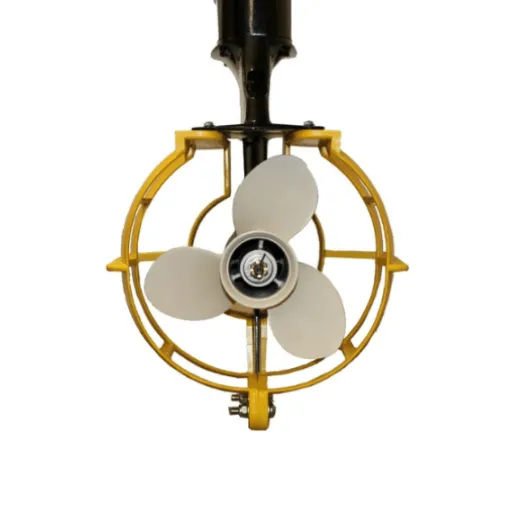
Foldable Propeller Guards: Advantages and Use Cases
Foldable propeller guards are a great step forward in marine safety and efficient operations. They protect marine life and prevent propeller-related accidents, and at the same time, their collapsible design causes little separation with the performance of the vessel. The guards are made of light, strong materials like reinforced composites or advanced alloys, which are not going to be speedy or fuel-intensive but still very durable.
The foldable feature allows for instantaneous moving forward and backward making it adaptable to different marine environments. For example, recreational boaters experience less drag when they operate at high speeds and, on the other hand, commercial vessels can reconfigure the guard according to their specific requirements, such as short water-depth personification. Moreover, the modular system allows the upkeep and the part replacement to be done in a simple manner which translates to less time spent and less money invested for the whole period of operating the vessel.
The current trends forecast that the foldable propeller guards will be part of the IoT enabled monitoring systems coming up. The integration will allow for real-time diagnostics and automated changes according to the operation conditions. For instance, there could be an arrangement of the sensors and the algorithms that will cut down the unnecessary drag by adjusting the guard’s position to the cruise mode. This feature of being able to change and act upon various user needs through innovations triumphing among the myriad of applications, spanning from leisure boating to shipping on a large scale—thus, enhancing marine safety and efficiency.
Materials and Engineering Innovations
Materials science and engineering have been evolving steadily, and their role in high-performance marine components, including the ones with IoT-enabled monitoring systems, has been crucial. Advanced composites like carbon fiber-reinforced polymers (CFRPs) and ultra-high-molecular-weight polyethylene (UHMWPE) are not only strong and light but are also becoming the main materials for modern propeller guards and hull reinforcements. The use of these materials has shown significant advantages over traditional metal alloys in terms of very high strength-to-weight ratios, excellent resistance to corrosion, and less hydrodynamic drag.
However, engineering accuracy has been gained not only through the use of FEA and CFD but also with the help of computational modeling and simulations. These technologies permit engineers to optimize designs for both structural integrity and performance efficiency, even before prototyping. For example, hybrid designs that combine titanium with polymer-infused coatings can spread the stress forces more evenly, thus enhancing durability while keeping the weight low.
The automated control systems’ integration with these engineered materials ensures that the maximum adaptability is achieved under actual conditions. Marine vessels, especially those operating in extreme environments, can benefit from such innovations which provide self-healing coatings and thermal resistance, thereby prolonging their operational life. All these innovations together represent the next stage in marine engineering, which is characterized by safer, more efficient, and sustainable shipping of goods via water.
Safety Features in Modern Propeller Rings
Propeller rings are modern manufacture with safety mechanisms to upscale the risks linked to high-performance taken from sea operations to a large extent. One of the main safety features is the use of advanced composite materials in the production, e.g. carbon fiber reinforced polymers, which develop the strength of the product and at the same time make it less prone to failure due to the stress being excessively high. The materials in question not only possess the highest tensile strength but they also have the lightest of weights thus they contribute to the overall reduction of strain on the propulsion system.
Moreover, modern design is quite often taken to the stage where hydrodynamic optimization to the point where cavitation effects are made so small that they no longer lead to vibrations, noise, and, even worse, damage of the part over time. Anti-fouling coatings belong to the family of safety enhancement measures that are essential, as they keep off the marine growth on the rings and thus the performance remains at its peak and the maintenance is also at its lowest level. During the design process, rigorous thermal and mechanical stress simulations help to determine the materials and the best conditions under which the propeller rings can operate so that safety is not put at risk.
The last point made here could perfectly be the accuracy of the real-time monitoring through the use of embedded sensors. The predictive maintenance algorithms combined with these systems help not just to eliminate failures but to ensure the reliability, safety, and efficiency of marine propulsion systems being in place for the whole period of usage.
Impact of Propeller Guards on Boat Performance
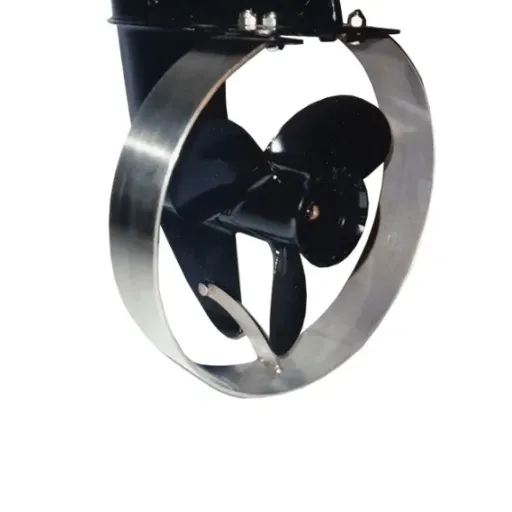
Efficiency Gains from Advanced Guard Designs
The modern-day design of propeller guards is representative of considerable hydrodynamic engineering practice, resulting in the enhancement of safety and performance of the vessels greatly. The combination of Computational Fluid Dynamics (CFD) and experimental testing has gone a long way in determining the optimal shape and material composition of these guards while ensuring that drag and turbulence are kept at the lowest possible levels. For example, one of the approaches used is the application of the streamlined designs which not only help in reducing the resistance of the water but also decrease the fuel consumption indirectly by allowing a more efficient flow of the water around the guard.
Recent research has revealed that under controlled conditions modern propeller guards could boost the total propulsion efficiency by as much as 15%. Their weight and also the thickness of the body are reduced to a minimum by the usage of light weight, anti-corrosive materials like aluminum alloys or composites made by polyamides, thereby enabling high strength. One of the crucial factors that lead to the uniting of the boat operators’ needs for safety and performance is the technological advancement which brings together the safety compliance of the operators through performance reduction of the environmental impact and the cost.
The performance of the vessel can still be enhanced along with the assurance of durability through the integration of intelligent guard systems with the onboard monitoring technologies, for instance, the sensors that check the flow patterns and the structural stress. This synergetic relationship of ideas makes it clear that the state-of-the-art propeller guard designs have not only been the moving factor but have also become the absolute necessity in making the efficiency easier while keeping the safety standards in the foreground.
Market Shifts in Propeller Safety Devices
The market for propeller safety devices is witnessing a major change that is the result of regulatory requirements, technological advancements, and environmental concerns. The maritime industry has been more concentrating on safety and that is why stricter compliance standards have been enforced. The main purpose of these regulations is to lessen the hazards caused by propellers to the utmost, and that includes reducing risks to the crew and marine animals. Thus, the manufacturers are now making big investments in creating innovative designs and engineering solutions that will fulfill the standards that have been raised.
One evident trend is merging of high-end materials and smart technologies into propeller safety systems. The adoption of sensors and IoT-enabled devices makes possible the real-time monitoring and predictive maintenance, which in turn decreases the possibility of the mechanical failure. At the same time, the introduction of light and strong composites makes performance easier without the sacrifice of strength, robustness, or safety. These technological advancements not only augment operational efficiency but also cater to the growing demand for eco-friendly solutions in the maritime industry.
In my view, to adopt these changes in the market it is important to have a comprehensive strategy that will include research and collaboration. One has to be constantly updated about the regulatory changes and new technologies. Besides, cooperation with manufacturers and experts from the industry will guarantee the safety device solutions not only meet operational requirements but also comply with regulations. By being proactive regarding these changes, the different parties involved will be able to reduce the risks effectively, improve marine operations, and help in the establishment of safer and more eco-friendly maritime practices.
Applications Across Various Sectors
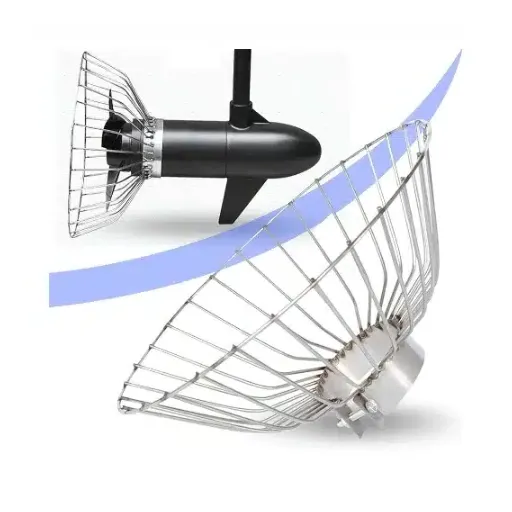
Commercial vs. Recreational Boating
Functionality, safety, and profit-driven operations are the main priorities for commercial boats, while leisure, aesthetics, and personal enjoyment are the main concerns of recreational boats.
| Key Point | Commercial | Recreational |
|---|---|---|
| Purpose | Profit-driven | Leisure-focused |
| Design | Practical, durable | Aesthetic, sleek |
| Functionality | Cargo, passengers | Watersports, cruising |
| Materials | Heavy-duty | High-quality |
| Regulations | Strict, certified | Minimal, flexible |
| Crew | Licensed, trained | Unlicensed, casual |
| Maintenance | Intensive, regular | Basic, occasional |
| Cost | High, operational | Variable, personal |
| Size | Large-scale | Small to medium |
| Usage | Long-term, business | Short-term, personal |
Emergency Services and Their Equipment Needs
Emergency services working in marine environments rely on specialized equipment to keep their operations safe and efficient. One of the most important examples is the advanced communication systems, like marine-grade radios with GPS integration, that allow agencies to coordinate seamlessly even under pressure. Besides, lifesaving devices such as rescue buoys, inflatable life rafts, personal flotation devices with integrated tracking, and thermal imaging cameras are all basic equipment in search-and-rescue missions, making them more efficient.
To meet the changing needs, the modern emergency response units have started using UAVs for quick monitoring and shadowing, as well as autonomous surface vessels to make it easier to get to and bring back people in risky areas. Moreover, there are fire suppression systems made specifically for marine use that enable firefighting units to tackle fires on ships and offshore rigs effectively. The use of these technologies along with real-time monitoring of weather conditions and tides, has greatly helped in making the right decisions during critical operations.
Employing these high-tech tools not only meets but also aligns with the global safety standards and regulatory frameworks, thus making interoperability and readiness better. Emergency services that are always in the front line of technological developments can, therefore, effectively reduce risks, save lives, and limit environmental damage in various marine situations.
Future Trends in Marine Safety Equipment
Looking forward to the future, the trends of marine safety equipment will probably turn over a new leaf as they will be able to rely on even more advanced automation and smart technologies. The progress made in the field of AI and machine learning is now making safety devices smarter and more efficient than ever, thus creating predictive abilities that were out of the question earlier. The use of AI in navigation, for instance, can ensure that the systems are aware of potential danger situations, thus providing the operators with the alert and the opportunity to react in a matter of seconds. In addition, the use of biometric sensors in wearable devices may become the norm, providing the medical staff and the crew with real-time health information and thus allowing for quick medical intervention whenever necessary.
The other trend that will be taking place at the same time is the requirement for marine safety solutions which are environmentally friendly. The focus of the industry is gradually shifting to the use of nature-friendly materials and equipment with the least environmental impact. This will also become the case for using biodegradable and recyclable materials in the production of floating aids, lifeboats, and communication equipment. Besides, the industry is likely to witness the growing presence of renewable energy-operated devices like solar-powered emergency beacons that would be both reliable and eco-friendly. These developments certainly indicate that sea operation safety and environmental care are no longer two incompatible areas.
In addition, the development of communication and connectivity is going to make big changes in marine safety around the world. Improved satellite communication systems will guarantee constant and uninterrupted data exchange at real-time thus making it possible to monitor and coordinate even in the far-off places. The completion of the 5G technology roll-out will also make it easier for safety equipment to communicate with central operation hubs quickly. The mentioned powers will undoubtedly play an important role in the ongoing process of global emergency response networks forming marine safety integration within larger frameworks as the world becomes more interconnected and a maritime industry that is more resilient than ever.
References
- Standard Operating Procedures for Yard Patrol Craft at USNA
This document from the U.S. Naval Academy provides detailed guidelines on safety equipment, including propeller-related safety measures. - Diving and Boating Safety Manual – Florida Atlantic University
This manual outlines safety protocols for boating and diving, including considerations for propeller areas and related equipment. - Safety Standards for Ship Repairing, Shipbuilding, and Shipbreaking – Washington State Department of Labor & Industries
This document includes safety standards for shipbuilding and repairing, with references to guards and safety equipment like ring life buoys. - Click here to read more.
Frequently Asked Questions (FAQ)
Q: What are propeller rings, guards, and baskets?
A: Propeller rings, guards, and baskets are the types of safety devices that work to promote the safety of the boat by encircling the propeller. The devices work as a physical barrier around the propeller, which thus considerably lowers the chances of an accident occurring due to the propeller causing injuries, particularly to the swimmers and marine life.
Q: How do propeller guards reduce drag?
A: The propeller guards of today come with the feature of drag reduction as they are thoughtfully designed to make the water flow around the propeller in a streamlined manner. Furthermore, this hydrodynamic configuration plays a dual role of facilitating the desired performance and protecting people in the water by trapping them within the physical barrier around the propeller.
Q: What is the purpose of installing a propeller guard?
A: Installing a propeller guard is a multitasking affair. It saves the propeller from wear and tear, and at the same time, it opens up a whole new aspect of boating safety by safeguarding against propeller strikes. Additionally, the guard also provides a defensive perimeter around the propeller, thus making the area adjacent to it, wherein the swimmers and marine organisms, much safer.
Q: What types of materials are used in propeller guard construction?
A: Propeller guards typically consist of robust materials like stainless steel or composites. These materials serve the dual purpose of long-lasting effective guarding, providing the propeller with an impermeable barrier, and at the same time, not hindering the boat’s performance.
Q: How do propeller rings and guards enhance safety?
A: Propeller rings and guards come into play and heighten safety levels in such a way that they blockade the contact with the blades of the propeller. They completely envelope the propeller and thus the chance of accidents arising from the swimmers, divers, or marine life unintentionally contacting the rotating blades of the propeller getting reduced.
Q: What innovations are present in modern propeller guard technology?
A: The modern days’ propeller guard technology includes innovations like those of hydrodynamic designs and the propeller guard systems that effectively minimize the instances of propeller strikes. Not only do these innovations improve safety but they also result in an increase in fuel efficiency and overall boat performance.
Q: Can you explain the types of propeller guards available?
A: The different variations of the propeller guards which include cage-style guards, ring guards, and baskets are depending on the purpose they are to serve. Each is specifically designed to perform a single function, be it the protection of aquatic life, ensuring the safety of individuals in the water, or providing a physical barrier around the propeller.
Q: How do propeller guards affect the performance of the boat?
A: Safety comes first with propeller guards, yet they may indirectly have a positive impact on the performance of the boat depending on the design. If they are designed right, drag can be lessened while advancing the efficiency of the propulsion thus contributing positively to the overall performance of the boat.
Q: Why is it important for boat owners to consider propeller safety?
A: To avoid accidents and injuries caused by propeller strikes, boat owners should consider propeller safety. With propeller guards and proper installation boats, operators may enhance navigation and safety of the entire boat population on and around the water.
Q: What is the role of the Coast Guard in relation to propeller safety?
A: The enforcement of safety regulations concerning boating is basically a responsibility of the Coast Guard. They raise propeller safety consciousness, promote the use of propeller guards, and at the same time, provide education to boat drivers on the importance of accident prevention involving the marine propeller and safeguarding all the users of the waterways.




